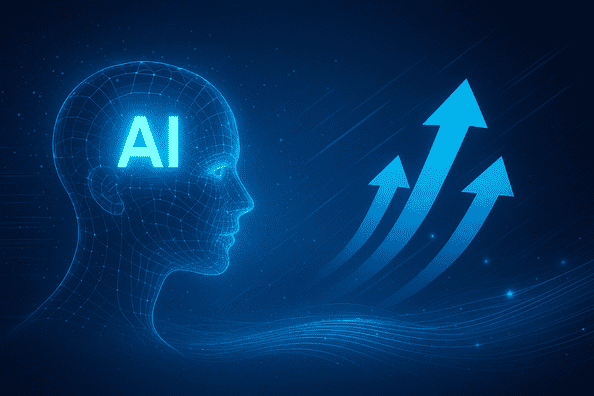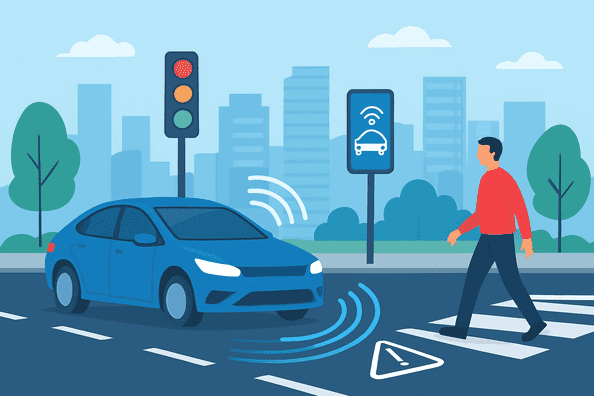The technology landscape is experiencing a seismic shift, and Apple AI stands at the epicenter of this transformation. As we witness the dawn of artificial intelligence becoming deeply integrated into our daily lives, Apple’s unique approach to AI development could fundamentally reshape how we interact with technology over the next decade. Unlike traditional cloud-based AI systems that prioritize raw computational power, Apple’s philosophy centers on privacy-first, on-device intelligence that maintains user control while delivering powerful capabilities.
Apple Intelligence, the company’s flagship AI initiative, represents more than just another feature update—it’s a comprehensive reimagining of how personal technology should work. By processing AI tasks directly on users’ devices rather than sending data to remote servers, Apple is establishing a new paradigm that could influence the entire technology industry for years to come.
The Foundation of Apple’s AI Strategy: Privacy Meets Power
On-Device Processing: A Revolutionary Approach
Apple’s commitment to on-device AI processing sets it apart from competitors who rely heavily on cloud-based computations. This approach leverages the Neural Engine embedded in Apple Silicon chips, enabling sophisticated AI tasks to run directly on iPhones, iPads, and Macs without compromising user privacy. The Neural Engine, first introduced with the A11 Bionic chip, has evolved dramatically—the latest A17 Pro delivers 35 trillion operations per second (TOPS), while the M4 chip operates at 38 TOPS.
This on-device approach offers several critical advantages:
- Enhanced Privacy Protection: Personal data never leaves the user’s device for most AI operations, eliminating the risk of data breaches or unauthorized access. Apple’s philosophy that “privacy is a fundamental human right” extends naturally to its AI implementations.
- Reduced Latency: Local processing eliminates the need for round-trip communications to remote servers, resulting in faster response times and more fluid user experiences.
- Offline Functionality: AI features work seamlessly even without internet connectivity, ensuring consistent performance regardless of network conditions.
Private Cloud Compute: Extending Privacy to the Cloud
For more complex AI tasks that require additional computational power, Apple developed Private Cloud Compute, a groundbreaking system that extends iPhone-level security to cloud processing. This hybrid approach allows Apple Intelligence to scale its capabilities while maintaining unprecedented privacy protections.
Private Cloud Compute operates on Apple Silicon servers and includes several innovative security features:
- Cryptographic Verification: User devices verify server software integrity before sending data
- No Data Storage: Information is processed and immediately discarded, never stored or made accessible to Apple
- Transparent Code: Independent experts can inspect the server code to verify privacy promises
- Secure Enclave Protection: Critical encryption keys are protected using the same technology found in user devices
Apple Intelligence: Transforming User Experience Across the Ecosystem
Enhanced Siri: The AI Assistant Reimagined
The evolution of Siri represents one of the most visible aspects of Apple’s AI revolution. Apple Intelligence has transformed Siri from a basic voice assistant into a contextually aware, intelligent companion that understands natural language more effectively and can perform complex, multi-step tasks.
Key improvements include:
- Personal Context Awareness: Siri can access information across apps, emails, messages, and files to provide more relevant responses
- On-Screen Awareness: The assistant understands what users are viewing and can take action on that content
- Cross-App Integration: Users can edit photos and send them via messages using a single voice command
- Type-to-Siri: Alternative text input method for situations where voice commands aren’t appropriate
Writing Tools: AI-Powered Content Creation
Apple Intelligence integrates sophisticated writing assistance directly into the operating system. These tools are available across virtually every app where users write, including Mail, Messages, Notes, and third-party applications.
The Writing Tools offer several capabilities:
- Text Summarization: Quickly condense lengthy documents, emails, or message threads
- Proofreading: Advanced grammar and style suggestions
- Tone Adjustment: Modify writing style for different contexts (professional, casual, friendly)
- Describe Your Change: Natural language instructions for specific text modifications
Visual Intelligence and Creative Features
Apple’s AI extends beyond text to encompass visual creativity and intelligence. The Image Playground app allows users to create original images using natural language descriptions, while Genmoji enables custom emoji creation based on text prompts.
Advanced photo features include:
Competitive Landscape: Apple’s Unique Position
Differentiation from Tech Giants
While companies like Google, Microsoft, and OpenAI focus on cloud-based AI solutions with impressive raw capabilities, Apple’s approach prioritizes user experience and privacy. This strategic differentiation could prove crucial as privacy concerns grow among consumers and regulators worldwide.
- Google’s Strategy: Emphasizes cloud-powered AI integration across search, productivity tools, and Android devices, leveraging vast data collection capabilities.
- Microsoft’s Approach: Focuses on enterprise AI through Copilot integration with Office 365 and Azure cloud services.
- Apple’s Vision: Combines powerful on-device processing with selective cloud capabilities, maintaining user control over personal data while delivering sophisticated AI features.
Market Positioning and Competitive Advantages
Apple’s integrated hardware-software ecosystem provides several competitive advantages in the AI space:
- Silicon Optimization: Custom Apple Silicon chips designed specifically for AI workloads deliver superior performance per watt compared to generic processors.
- Ecosystem Cohesion: Seamless AI feature integration across iPhone, iPad, Mac, Apple Watch, and other devices creates a unified user experience.
- Developer Tools: Core ML and the new Foundation Models framework provide developers with sophisticated AI capabilities at zero inference cost.
- User Trust: Apple’s established reputation for privacy protection gives it credibility in AI deployment.
The Developer Revolution: Democratizing AI Innovation
Foundation Models Framework: Opening AI to Third Parties
At WWDC 2025, Apple introduced the Foundation Models framework, granting developers direct access to the same on-device AI model that powers Apple Intelligence. This strategic move democratizes sophisticated AI capabilities while maintaining Apple’s privacy-first approach.
The framework offers developers:
- Zero Inference Costs: Unlike cloud-based AI APIs, developers pay nothing for AI processing
- 3 Billion Parameter Model: Access to a sophisticated language model optimized for on-device operation
- Privacy Preservation: All AI processing occurs locally on user devices
- Seamless Integration: Easy incorporation into existing apps through familiar APIs
Economic Impact on App Development
This developer-friendly approach could trigger an explosion of innovative AI applications exclusive to the Apple ecosystem. Traditional AI development is often limited by expensive cloud API costs, making many potential applications commercially unviable. Apple’s zero-cost model eliminates this barrier entirely.
The economic implications are significant:
- Reduced Development Costs: Developers can experiment with AI features without worrying about inference expenses
- Innovation Acceleration: Lower barriers to entry encourage more developers to integrate AI capabilities
- Ecosystem Strengthening: AI-powered apps drive user engagement and App Store revenue
- Competitive Moat: High-quality AI apps become exclusive to Apple platforms
Industry Transformation: Reshaping Technology Standards
Setting New Privacy Standards
Apple’s privacy-centric AI approach could establish new industry standards for responsible AI development. As regulatory scrutiny of AI systems intensifies globally, Apple’s proactive privacy measures position the company favorably for future compliance requirements.
Key privacy innovations include:
- Differential Privacy: Mathematical techniques that add carefully calibrated noise to data, protecting individual privacy while preserving analytical value
- Federated Learning: Training AI models across distributed devices without centralizing personal data
- On-Device Inference: Keeping sensitive computations local to user devices
- Transparent AI: Clear communication about when and how AI features access user data
Influence on Competitor Strategies
Apple’s success with on-device AI could pressure competitors to reconsider their cloud-centric approaches. As consumers become more privacy-conscious, companies may need to invest in edge computing capabilities to remain competitive.
Potential industry shifts include:
- Edge Computing Investment: Increased focus on processing power in consumer devices
- Privacy Feature Development: Enhanced data protection measures across platforms
- Hybrid AI Architectures: Combining on-device and cloud processing for optimal privacy-performance balance
- Regulatory Alignment: Proactive compliance with emerging AI governance frameworks
Future Implications: The Next Decade of Technology
Hardware Evolution and Market Dynamics
Apple’s AI strategy is intrinsically linked to its hardware roadmap, creating powerful incentives for device upgrades. Apple Intelligence features are exclusive to devices with sufficient processing power, effectively requiring users to purchase newer hardware to access the latest AI capabilities.
This approach could generate substantial revenue through:
- Accelerated Upgrade Cycles: AI-exclusive features motivate users to replace older devices
- Premium Product Positioning: Advanced AI capabilities justify higher prices for new products
- Services Revenue Growth: AI-enhanced features drive adoption of paid services like iCloud and potential “Apple Intelligence+” subscriptions
Ecosystem Expansion and New Product Categories
Apple’s AI developments lay the groundwork for entirely new product categories. While Apple executive Eddy Cue controversially suggested that iPhones might become obsolete by 2035 due to AI advances, this likely refers to the evolution toward new form factors rather than the elimination of personal devices entirely. Potential future developments include:
- Smart Glasses Integration: AR/VR devices with built-in AI assistants for ambient computing
- Home Automation Enhancement: More sophisticated AI-powered smart home ecosystems
- Health Monitoring Evolution: Advanced AI analysis of biometric data for personalized health insights
- Automotive Integration: AI-enhanced vehicle interfaces and autonomous driving capabilities
Societal Impact and Ethical Considerations
Apple’s emphasis on privacy-preserving AI could influence broader societal attitudes toward artificial intelligence. By demonstrating that powerful AI capabilities are possible without sacrificing user privacy, Apple challenges the prevailing narrative that effective AI requires extensive data collection.
Long-term societal implications include:
- Privacy Awareness: Increased consumer demand for transparent, privacy-preserving AI systems
- Regulatory Influence: Apple’s approach could inform government AI policy development
- Digital Equity: On-device AI reduces dependence on high-speed internet connectivity
- Trust Building: Successful privacy-first AI implementation could increase public acceptance of AI technologies
Economic Transformation: AI as a Business Driver
Revenue Model Innovation
Apple’s AI strategy creates multiple revenue streams while reinforcing its existing business model. Unlike competitors who monetize AI primarily through advertising or subscription services, Apple leverages AI to enhance hardware value and drive ecosystem engagement.
Key revenue drivers include:
- Hardware Premium: AI capabilities justify higher prices for new devices
- Services Growth: AI features enhance existing services like iCloud, App Store, and Apple Music
- Developer Ecosystem: Commission revenue from AI-powered apps and in-app purchases
- Subscription Potential: Future “Apple Intelligence+” premium tiers for advanced features
Investment and Infrastructure Development
Apple’s commitment to AI infrastructure represents a massive capital investment. The company has pledged over $500 billion in U.S. economic investment over four years, with significant portions dedicated to AI research, development, and manufacturing capabilities.
This investment includes:
- Domestic Manufacturing: New facilities for producing AI-optimized hardware
- Research Expansion: Hiring thousands of AI/ML engineers and researchers
- Data Center Development: Infrastructure for Private Cloud Compute operations
- Supply Chain Enhancement: Strengthened component sourcing for AI-capable devices
Global Technology Leadership: Shaping the Future
Research and Development Leadership
Apple’s AI research extends beyond immediate product applications to fundamental advances in machine learning and artificial intelligence. The company’s research teams are actively working to redefine industry standards for AI efficiency, privacy, and user experience.
Current research focus areas include:
- Model Efficiency: Developing more capable AI models that run effectively on mobile hardware
- Privacy Techniques: Advancing federated learning and differential privacy methodologies
- Chip Design: Using AI to accelerate the development of next-generation Apple Silicon
- Human-AI Interaction: Improving natural language understanding and contextual awareness
International Expansion and Localization
Apple Intelligence is expanding globally with localized support for multiple languages and regions. This international rollout demonstrates Apple’s commitment to making AI accessible worldwide while respecting cultural and linguistic diversity.
The expansion includes:
- Language Support: Danish, Dutch, Norwegian, Portuguese, Swedish, Turkish, Chinese, and Vietnamese by year-end
- Regional Adaptation: AI features tailored to local customs and regulations
- Developer Resources: Localized tools and documentation for international app development
- Regulatory Compliance: Adaptation to regional AI governance requirements
Challenges and Opportunities Ahead
- Technical Challenges
- Despite its promising foundation, Apple’s AI strategy faces several technical challenges that could impact its long-term success:
- Model Limitations: On-device models are inherently smaller and potentially less capable than cloud-based alternatives
- Hardware Requirements: AI features demand significant processing power and memory, limiting compatibility with older devices
- Battery Impact: Intensive AI processing could affect device battery life despite optimization efforts
- Update Complexity: Distributing AI model updates across millions of devices presents logistical challenges
Market Competition and Response
As Apple’s AI capabilities mature, competitors are likely to respond with their own innovations, potentially eroding Apple’s current advantages:
- Google’s Advances: Continued development of Gemini and other AI systems could close capability gaps
- Microsoft’s Enterprise Focus: Deeper AI integration in business environments could capture professional users
- Emerging Players: New companies specializing in privacy-preserving AI could challenge Apple’s differentiation
- Open Source Alternatives: Community-developed AI tools might provide comparable capabilities at lower cost
Regulatory and Social Considerations
The global regulatory environment for AI continues evolving, creating both opportunities and challenges for Apple’s strategy:
- Privacy Regulations: Strengthening data protection laws could favor Apple’s privacy-first approach
- AI Governance: New AI-specific regulations might require significant compliance investments
- Antitrust Scrutiny: Apple’s integrated ecosystem could face increased regulatory attention
- Ethical AI Standards: Pressure for algorithmic transparency and bias mitigation could impact development priorities
Conclusion: Apple AI as a Catalyst for Industry Evolution
Apple’s AI revolution represents far more than a collection of new features—it embodies a fundamental reimagining of how artificial intelligence should serve humanity. By prioritizing privacy, user control, and seamless integration over raw computational power, Apple AI is establishing a new paradigm that could influence technology development for the next decade and beyond.
The company’s strategic approach addresses growing concerns about data privacy and algorithmic transparency while delivering genuinely useful AI capabilities. This balance between innovation and responsibility positions Apple to lead not just in market share, but in defining ethical standards for AI development industry-wide.
As we look toward the future, Apple’s AI revolution offers a compelling vision: technology that enhances human capability without compromising human dignity. Whether this vision becomes the dominant model for the technology industry will depend on Apple’s continued execution and the broader market’s response to privacy-preserving AI alternatives.
The next decade will reveal whether Apple’s patient, privacy-first approach to AI development proves superior to the more aggressive, data-intensive strategies pursued by its competitors. Early indicators suggest that Apple’s methodology resonates with both developers and consumers, potentially setting the stage for a fundamental shift in how the technology industry approaches artificial intelligence.
In an era where AI threatens to centralize power in the hands of a few technology giants, Apple’s approach offers a different path—one where AI serves users directly through their personal devices rather than through distant data centers. This philosophical difference could prove to be Apple’s most significant contribution to the technology landscape, influencing not just product development but the very nature of human-computer interaction in the digital age.



